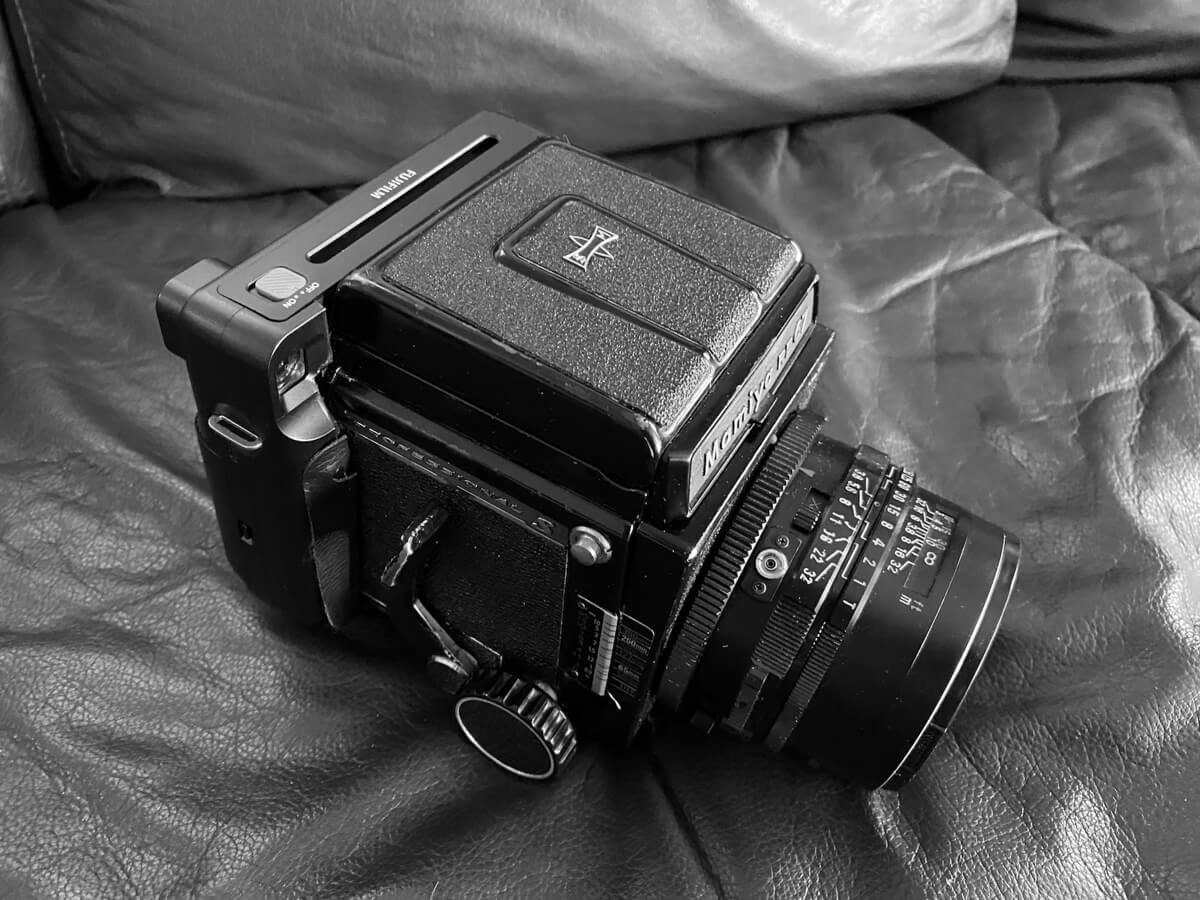I’ve spent over a decade of my life living and breathing photography. Like many, I started with digital but quickly realized that I wanted a more physical process. I was, and still am, spending entirely too much time behind a computer. I’ve shot multiple formats, from 35mm to medium and even large format. And then, one day, I lost the spark. It’s been three or four years since I picked up a camera for anything more than a snapshot of my kids.
A few weeks ago, presumably during a sleepless night, I ordered an Instax square back for a Mamiya RB67. I don’t remember placing the order and I was surprised when it showed up. I didn’t even own an RB67 at the time. It took me a few days of scouring eBay to find one, which incidentally came with a 127mm f/3.8 lens that was a little beat up but functional. A few days later, I was holding my new Frankenstax. It’s a beast, almost the size and weight of my 4×5 Graflex Speed Graphic.
My masochistic streak approves.
The first few frames were duds. One thing I quickly learned about Instax is just how little dynamic range it has. Spot metering, I learned, is the name of the game. It was a bit of a shock – black-and-white film spoiled me rotten. I also missed the fact that I needed to take exposure compensation into account based on where I was focusing. The bellows on the camera should have clued me in, but hey, I’m rusty. Once I figured that out, I was off to the races.
I’m still getting the hang of what my new setup is capable of, and I expect that it will take me months to fully get comfortable. It’s cumbersome and slow — again I actually like that — and the film’s lack of dynamic range is limiting. Anything in direct sunlight is particularly challenging, and indoor shooting with natural light is touch-and-go. f/3.8 is not slow, per se, but even at ISO 800, I’m routinely in camera shake zone, bracing the camera on wine glasses, stacks of books, anything that will provide me just enough stability to pull off 1/15th of a second.
I like it. The film has a nice grain structure to it, and while the lens is not exactly famous for its bokeh, I find it very pleasing. Watching the image fade in over a minute or two is both fun and, given how easy it is to lose detail in the highlights, shadows, or both, more than a little tense. Most importantly, I think I have the spark back. I am, once again, thinking about photographs to create. I missed that feeling.
~ Alex
Submit your 5 Frames… today
Get your own 5 Frames featured by submitting your article using this form or by sending an email via the contact link at the top of the page.
Share your knowledge, story or project
The transfer of knowledge across the film photography community is the heart of EMULSIVE. You can add your support by contributing your thoughts, work, experiences and ideas to inspire the hundreds of thousands of people who read these pages each month. Check out the submission guide here.
If you like what you’re reading you can also help this passion project by heading over to the EMULSIVE Patreon page and contributing as little as a dollar a month. There’s also print and apparel over at Society 6, currently showcasing over two dozen t-shirt designs and over a dozen unique photographs available for purchase.














9 responses to “5 Sheets… Of Fujifilm Instax Square Monochrome on a Mamiya RB67 (EI 800 / Mamiya Sekor C 127mm f/3.8)”
Yeah, thats where I got mine. Needed gaffers tape around the darkslide slot, but works fine otherwise.
Would be hard I assume, but would make for a funny digital/analog back solution if it worked.
Thanks for confirming my suspicions about it being a hack (OK, I guessed the wrong camera) I wonder if the Fujifilm SQ10 (hybrid digital / analog) would lend itself to similar changes… ?
I just got mine. It’s a salvaged Fujifilm SQ6. A little rough around the edges but works like a charm. The film is surprisingly sharp!
I just ordered one from http://www.zluxtech.com. The best price I could find and what I’ve heard it’s working perfectly for those who has tried it.
There’s a very genuine-looking FujiFIlm logo just visible and also a viewfinder and an ON-OFF switch, plus a camera strap bracket. I wonder if it’s well-engineered hack of one of the Fuji Instax 200 /300 / 500 range of Instax cameras?
Failing that, perhaps a Fuji prototype that didn’t go into production
Thanks for posting, Alex. I think these are good photos emerging from your experiments. Glad you regained your spark.
I’m very intrigued too. Found a company on facebook called “Coyote Camera Works” who makes an instax back for the rb67, but their webpage is “under maintenance” so not sure they’re still active.
Hi Alex – I’m impressed with your results. Who makes the back? – I’ve checked out eBay UK and can’t find any reference to it.
Thanks,
John F.